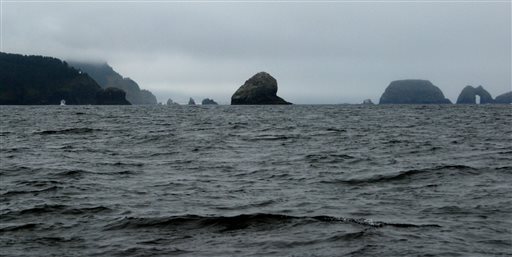BY MICHAEL WINES
Copyright 2014 New York Times News Service
SEATTLE — A new and most likely controversial analysis of Pacific Ocean weather patterns concludes that a century-long trend of rising temperatures in the American Northwest is largely explained by natural shifts in ocean winds, not by human activity.
The analysis, published on Monday in the prestigious peer-reviewed journal Proceedings of the National Academy of Sciences, effectively suggests that the region has warmed because ocean winds, on average, have weakened and shifted direction.
Scientists have long known that sea surface temperatures are lower when strong winds whip up ocean waves, and higher when the seas are calm.
Researchers generally have assumed that the phenomenon was but one factor in that warming, and that increased levels of carbon dioxide from human activity play a major role in driving rising temperatures.
But the new analysis, which relies on wind, barometric pressure and temperature data recorded from 1900 to 2012, concludes that human activity has little impact.
“The concept of winds controlling or affecting ocean temperature in that very way is not controversial, but the strength of that relationship was quite amazing” in the northwestern Pacific, said James Johnstone, a climatologist and the study’s lead author.
“It explains practically every wiggle in the ocean temperature variations. It’s a phenomenal correlation.”
While the analysis plays down the impact of human activity on the region’s temperatures, its findings are not a judgment on the origins of climate change everywhere, the authors emphasized.
Indeed, they said, the characteristics of the region studied — an area of the Pacific from Alaska to Hawaii to California — may conspire to make wind the determining factor in air temperature.
Wind changes were shown to influence land temperatures in the area of the study, from Northern California to Oregon and Washington, but the effect diminished with the distance from the ocean.
The article appears as heads of state are gathered at the United Nations for a climate summit meeting emphasizing the human role in global warming. Dr Johnstone said the timing was coincidental.
“Look at a map of the world’s hot spots for wind variations, and the North Pacific shows up as a pretty special place, one of those hot spots,” said the study’s co-author, Nathan J. Mantua, a research scientist at the federal government’s Southwest Fisheries Science Center in Santa Cruz, Calif.
Not only are the region’s winds highly variable, he said, but they also influence other factors, including ocean currents, that affect temperature.
Ocean surface temperatures in the northeast Pacific and the Northwest coast have risen between one-half and one degree Celsius since about 1900. That slow rise unfolded amid temperature shifts caused by climate cycles like the warm-water Niño and the larger, longer Pacific Decadal Oscillation.
The study concludes that cycles like those play out over far longer periods, and that the current warming appears to be part of one.
About 80 percent of the temperature increases in the ocean and coastal areas was attributed to a weakening of the North Pacific high, a high-pressure zone that dominates northeast Pacific weather.
The scientists’ ocean measures were gathered from measurements of temperature, pressure and wind made independently by ships and, later, more advanced weather monitoring devices.
While the measurements varied day to day, broader changes in barometric pressure were followed in lock step, about four months later, by changes in temperature.
The study cast doubt on the possibility that the wind changes were themselves caused by rising carbon-dioxide levels, noting that simulations employing the latest climate-change computer models found no such link, and that temperatures rose most sharply when carbon dioxide levels were lower.
One renowned climate scientist who had not seen the study, Kerry A. Emanuel of the Massachusetts Institute of Technology, said its findings were not inconsistent with what experts know about climate change.
“The common misperception about global warming is that it’s globally uniform,” he said. “It isn’t. There are even a few places over a couple hundred years that have actually cooled, such as the Southeastern U.S.”

